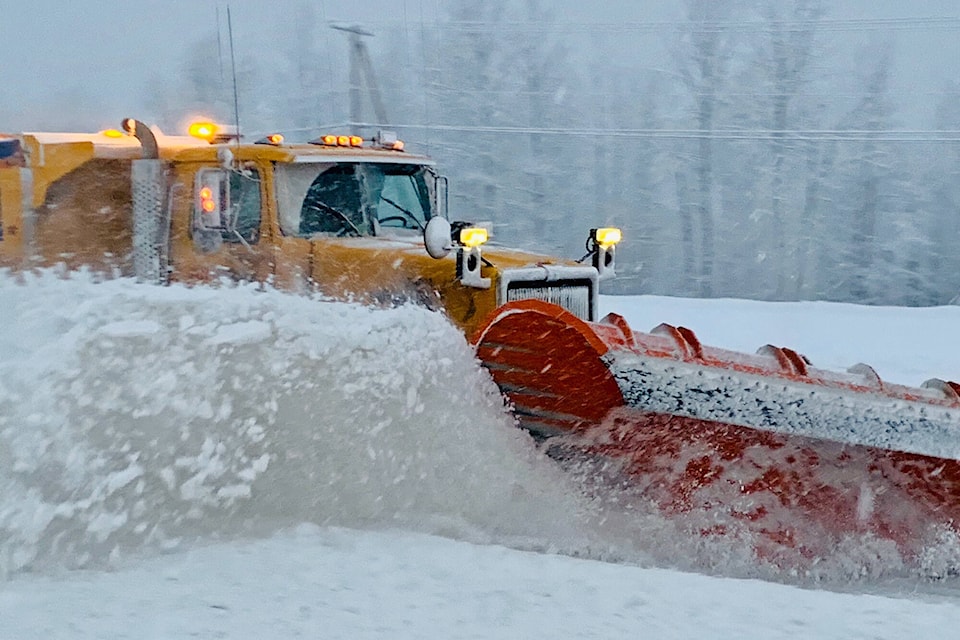Have a concern regarding snow or another highway maintenance issue in need of attention?
The Okanagan-Shuswap’s highways maintenance contractor, AIMRoads, now offers an online option to share that concern and have it addressed.
AIMRoads recently announced a new online service request form at aim-roads.ca. The form asks for specifics regarding location and details of the issue.
You can still call or email AIMRoads 24 hours a day, seven days a week, at 1-866-222-4204 or aimcommunications.ca@acciona.com.
In 2019, AIM Roads was awarded a 10-year contract by the Ministry of Transportation and Infrastructure to provide highway maintenance for the South Okanagan (Service Area 8) and Okanagan-Shuswap (Service Area 13). The same year, the ministry renewed standards for most of its 28 regional maintenance contracts, including those with AIMRoads/Accciona. The new standards called for Class A highways (Trans-Canada Highway) to be returned to “bare pavement” within 24 hours of a winter storm when the temperature is -9 C or warmer. The previous standard for those conditions was 48 hours. Class B roads must be returned to bare pavement within 36 hours and Class C within 48 hours.
Read more: B.C. raising highway maintenance standards for winter driving
Read more: Rural Shuswap residents unimpressed with winter road maintenance
A compact snow surface is allowed if the temperature is -9 C or colder, but the surface must be kept free of holes or ruts. Prior to a “winter event,” roads are to be pre-treated with anti-icing chemicals. And the maximum size for winter abrasive was reduced from 12.5 mm to 9.5 mm.
A new specification was made for a condition referred to as “compact,” when snow, slush or ice has been compressed to form a solid mass. When low temperatures lead to compact on the road surface, maintenance contractors must keep it smooth and under 40 mm in thickness. If pavement temperatures remain colder than -9 C, the compact can remain until pavement temperatures are -9 C and warming.
The province also has specifications for when there’s too much snow on a highway. For class A, it’s four centimetres for one lane in each direction, and 8 cm for the second lane. For all other lanes (brake check, chain-up areas, etc.) it’s 12 cm. For Class B highways it’s 6 cm for one lane each direction, 10 cm for the second lane and 16 cm for other lanes.
Within the Columbia Shuswap Regional District (CSRD), the ministry is responsible for roads, including maintenance and repairs, snow clearing and ice control, in unincorporated areas.
lachlan@saobserver.net
Like us on Facebook and follow us on Twitter
Sign up for our newsletter to get Salmon Arm stories in your inbox every morning.
